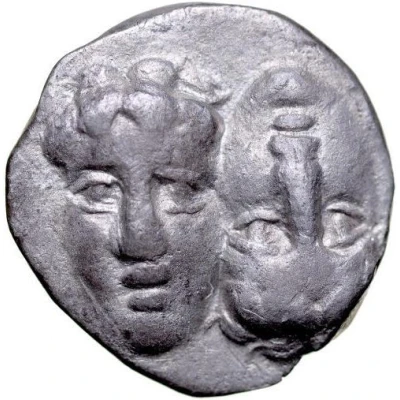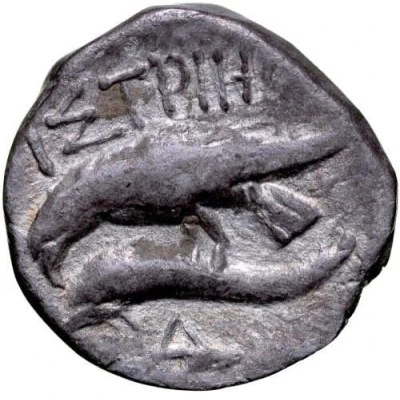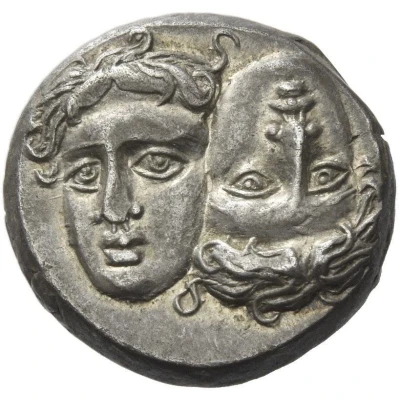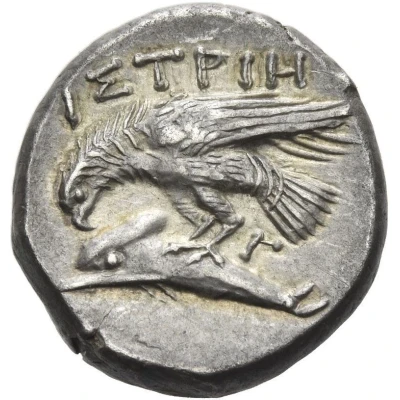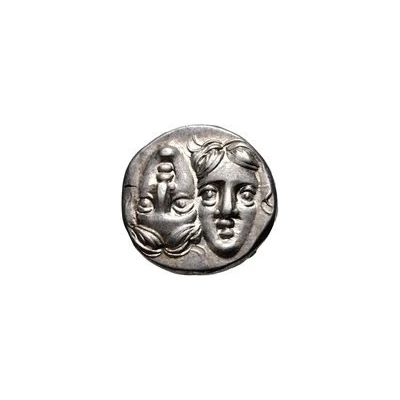
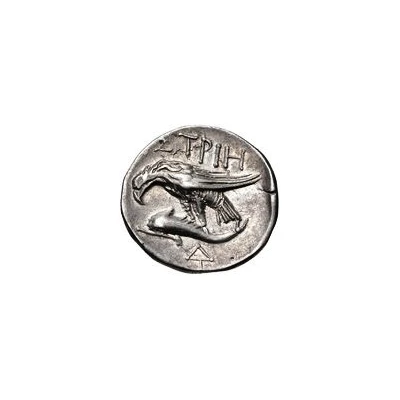

© bijiteshdutta
Trihemiobol 450 BC - 350 BC
| Silver | 1.3 g | 11 mm |
| Issuer | Istros (Moesia) |
|---|---|
| Type | Standard circulation coin |
| Years | 450 BC - 350 BC |
| Value | Trihemiobol (¼) |
| Currency | Drachm |
| Composition | Silver |
| Weight | 1.3 g |
| Diameter | 11 mm |
| Thickness | 2 mm |
| Shape | Round (irregular) |
| Technique | Hammered, Incuse |
| Demonetized | Yes |
| Updated | 2024-10-10 |
| Numista | N#47599 |
|---|---|
| Rarity index | 75% |
Reverse
Sea-eagle left, grasping dolphin with talons.
Script: Greek
Lettering: ΙΣTPΙH
Edge
Rough
Interesting fact
The Trihemiobol coin was used in the ancient Greek city of Istros (nowadays known as Istanbul) during the 5th century BC. Its name "Trihemiobol" comes from the Greek words "tri", meaning three, and "hemiobol", meaning a half-obol, which refers to the coin's value being equal to three half-obols. Despite its small value, the Trihemiobol was widely used in trade and commerce throughout the region, and its design has been found in various archaeological excavations in the area.
